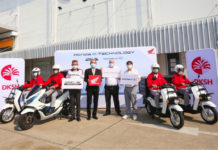Medical tourism remains a strong economic driver for Bangkok
A question that must play on the mind of the many quality hospitals and medical facilities in Thailand, and especially in Bangkok, is how much will the creation of the ASEAN Economic Community (AEC) at the end of 2015 affect medical tourism?
The answer, of course, is not a definite, but some conclusions may be drawn based on the statistical variations of the past few years.
Bangkok has been a prime destination for ‘medical tourists’ for some years now. In 2010, figures released by the Ministry of Public Health suggested medical tourism was worth 78.74 billion baht with 1.98 million patients arriving in Thailand. The majority of these medical tourists came from Japan, followed by people from the ASEAN member states, the Middle East, United States, and the United Kingdom.
By 2012, the demographic had changed somewhat. Although Japan was still the number one customer, people from the United States ranked as second, ahead of the United Kingdom. Fourth position came from the Middle East, but restricted to nationals from the Gulf Cooperation Council (GCC), which consists of six countries: Saudi Arabia, Kuwait, United Arab Emirates, Qatar, Bahrain, and Oman. Moving into fifth place were citizens from Australia. All told, the 2012 numbers showed around 2.53 million people came to Thailand, and mainly into Bangkok, for medical tourism reasons. That represented an increase in numbers of 27 percent over the 2010 figures.
Notably, ASEAN citizen numbers had dropped significantly. This is mainly because both Singapore and Malaysia have recognised the value of medical tourism and ramped up the quality and offerings to ASEAN nationals.
Apparently, the figures show that while Thailand has lost the ASEAN medical tourists, it has gained the US and UK long-haul travellers who are coming to the region for medical reasons. Thailand ranks as the second-most visited country by US nationals for medical services, behind Mexico.
Bumrungrad Hospital in Bangkok is probably the best-known in the country and it certainly climbed aboard the medical tourism bandwagon a long time ago. According to figures it has released, Bumungrad has seen its share of international patients rise from a substantial 55 percent in 2009 to 61 percent in both 2011 and 2012.
Thailand has enhanced its reputation in recent years as a country with internationally accredited medical facilities. Thailand was the first country in Asia to achieve Joint Commission International (JCI) accreditation in 2002, and as of the middle of 2014 there were 37 hospitals now accredited, with no less than 23 located in Bangkok.
More and more of Thailand’s medical professionals are highly qualified and a number have won awards for their work. Over 500+ doctors practicing in Thai hospitals are American Board Certified.
A major plus for Bangkok and Thailand is there are no waiting lists. There are sufficient qualified surgeons that there is little, if any, waiting for scheduling even the most complex and invasive procedures using state-of-the-art technology. This fast-track ability is especially popular with potential patients from the United Kingdom and Australia. For Americans, it’s the lower costs of medical treatment compared with the USA that is the attraction.
Depending on the procedure, recovery time might be as little as a few hours or last a few weeks if not longer. Chances are, once the procedure has taken place and recovery is complete, most of the patients will be on the first available flight out of Thailand. Yet, having had a little time in the country, albeit for medical reasons, it’s no real surprise that large numbers are not only recommending medical procedures inThailand but are often returning as regular tourists.










